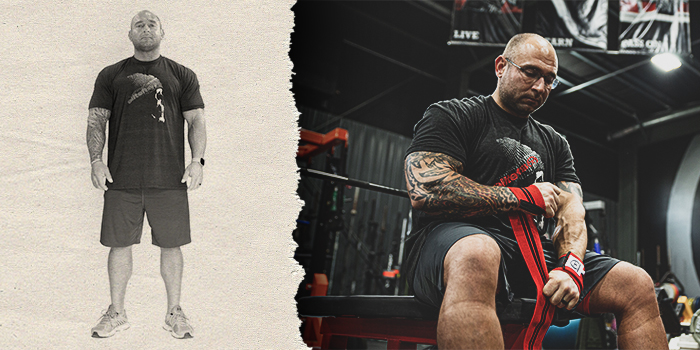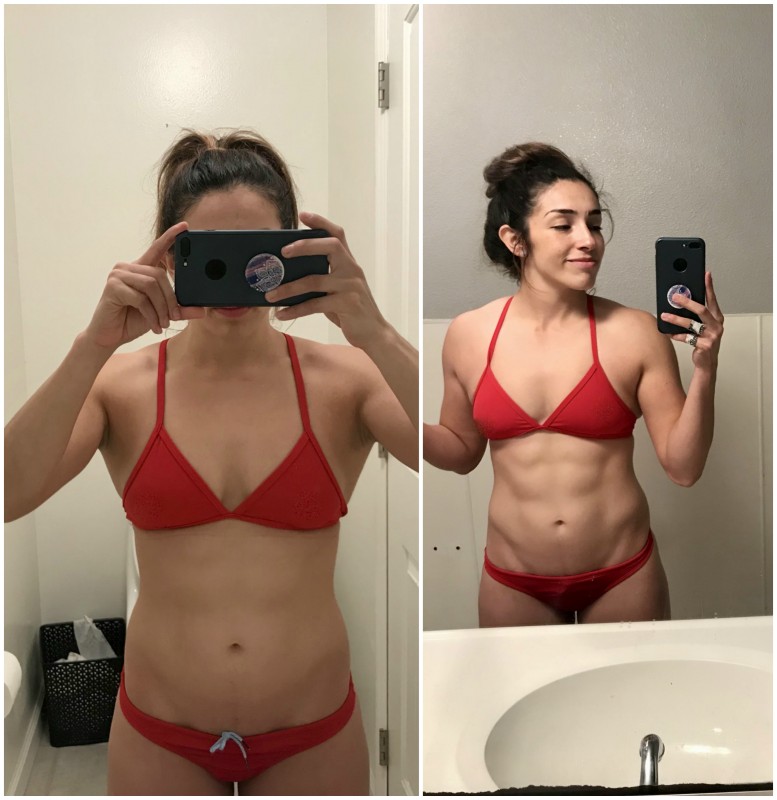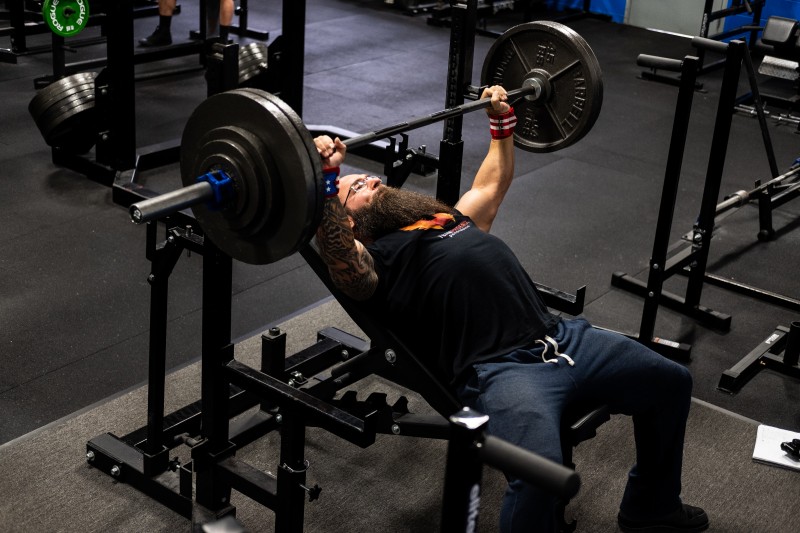
There is so much information out there and new studies are coming out all the time when it comes to nutrition. All of this is great, but sometimes it can get a little overwhelming, and people spend way too much time reading instead of just starting. Knowledge is great, so I definitely recommend reading what you can and learning from the people who have been there and done that, but the best advice I can give you is to just get started and adjust as you go.
RECENT: How to Build a Mesocycle
First things first, let’s cover the most important part of every diet: calorie consumption. Simply put, if you want to lose weight, then you need to eat fewer calories than you are burning. Basically, you need to be in a calorie deficit. There are two ways to do this. You can either exercise more to burn off calories or eat less. If you combine the two with exercise and a proper diet, the results will be that much better, but that doesn’t mean you should jump out of the gates with a ton of cardio and a huge drop in food. I would always suggest getting the most out of the least and starting with simply increasing your activity level, which will yield a ton of positive results without having to drop food just yet.
First, you need to figure out how many calories you need to consume to maintain weight. This is called your resting metabolic rate, and to calculate that, you need to multiply your bodyweight by 12; if you have a physically active job, then you multiply it by 15. This is just a very general rule of thumb. Everyone is different, but this will give you a decent base plan to follow. If you want more information on how to set up your diet, check out this article I wrote a while back.

You can also just track food for three days and take the average calories for the three days and see if you are losing, gaining, or maintaining weight, and that can give you a very good idea on where to start.
Most, if not all, nutritionists will echo this sentiment: the thing that causes confusion is “a calorie is just a calorie,” meaning as long as you are in a deficit, you will lose weight. If your diet consists of milk and Pop Tarts, you will still lose weight just the same if it was rice and chicken.
Science will say, “Yes, that is an accurate statement,” and I will have to tend to agree with this. Although you will lose weight, you will be missing out on some vital nutrients. Also, if your calories aren’t very high, you’ll want to find foods that create more volume and that will keep you fuller for longer.
“A calorie is just a calorie” is a great guide for the general population of people who are looking for an easier route to lose some weight, but for athletes and serious fitness enthusiasts, a calorie is not just a calorie, and the ones you consume make a huge difference.
Focus on how your body feels and how it digests the foods you consume. If you feel great and are performing at a high level with the food selection, then keep that in. There are no good or bad foods — it is just being mindful of what makes up the majority of your calories and making sure they have some nutritional value to them.
Calories are derived from three macros that give our bodies fuel for our everyday lives. This includes brain function, awareness, body performance, and just all of our everyday occurrences.
With that being said, I will have to say common sense will tell you the better you eat, the better everything else will perform. We’ve all heard the car analogy, and it rings true: Our bodies are high-performance machines like a Ferrari, and if you want your Ferrari to perform with all cylinders, you don’t put cheap oil and cheap gas in it; you put the expensive stuff in it. Our bodies are the same way: the more nutrient-dense foods you feed it, the better it performs — foods that are more than just processed sugars; foods with vitamins and minerals in them; and foods that have more complex carbs and better nutrient profiles.
Yes, a calorie is just a calorie, but if you fuel your body with the best food, it will perform at a higher level day to day. If you’re performing at a high level, you will burn more calories throughout the workout; you will increase muscle size, endurance, and strength. Good calories will also help with recovery, so you can work out harder and more often throughout the week. You want to emphasize good quality food to get good quality muscle size and weight loss.

Here’s a basic overview of calories for weight loss and weight gain, and the key takeaways are:
- Eat high-quality foods instead of processed foods for the majority of your food selection;
- Calories are just calories, but to take your body to the next level, you need to pay attention to the foods you eat;
- Be consistent week-to-week; and
- Make small adjustments in calories when you hit a plateau.
The next step to creating a diet that works for you is to figure out how to break down the macros for your diet and to learn exactly what they do for you. We’ve already laid down the groundwork to a successful diet with the importance of calories and how to find the right amount for your goals. Now, we’ll plug in the macros per meal to get you to your desired goals, but before we do that, you need to know exactly the benefits of each macro and how to incorporate them into your day.
You have your three macronutrients, which are fat, carbohydrates, and proteins. First, let’s discuss protein. Proteins are the building blocks of muscle growth and repair, so after a hard workout, protein breaks down into amino acids and begins the repair process so you can make it back the next day and be fully recovered for your next workout. Protein also has the highest thermogenic effect on the body, meaning it burns the most calories of all the macros when you consume it. Protein is also great at keeping you satiated/full longer.
As you can see, protein is crucial for successful dieting. It not only helps you keep on your muscle, but it also plays a huge role in burning calories and keeping you full — all things that will help any person on a diet stay sane. Every gram of protein you consume is equal to four calories.
The next two macros get a bad rap. From one extreme to the next, you’ve probably heard that carbs will make you fat and should be avoided at all costs; and on the other side, you’ve probably heard that fats are bad for you and should be avoided at all costs. However, both play a huge role in the human body, and neither one should be neglected in a diet.

The first one we will talk about is fats. Fats are great at regulating the thyroid and various hormones, like testosterone, which help suppress hunger as you diet, which is crucial to staying on track. Fats are also good at keeping you fuller longer, reducing cortisol levels, providing energy, and assisting the body in functioning properly. It also helps with insulin sensitivity and cardiovascular health. Fats are extremely important while dieting.
Naturally, as you go into a calorie deficit, testosterone and other hormones down-regulate, so the fats will keep your endocrine system healthier. It also helps with joint pain, which will come as you get leaner. A good threshold for total fat consumption is 30 grams a day. Every gram of fat you consume is equal to nine calories.
Now on to the carbs that will, of course, make you fat. Carbs give you energy and replenish your glycogen stores that have been depleted due to intense workouts, which help transport a lot of your protein and other micronutrients, such as vitamins and minerals, to keep your body functioning at a high level.
Carbs are also the most metabolic nutrient we eat. They are a key macronutrient for a diet, as it is protein-sparing, so it will help preserve size and give you energy around your workouts. Our bodies prefer carbs as its main energy source, and it is available at a rapid rate, so you can see why carbs are crucial for athletes who lift weights or do any type of anaerobic exercises. Every gram of carbohydrates you consume is equal to four calories.
Obviously, when you’re trying to lose weight, you will have to manipulate the macros to get the calories down, but you don’t want to completely cut out an entire macronutrient for an extended period of time. An easy way to look at it is that on days you train, you can increase carbs and lower fats, and on the days off from training, you don’t need as many carbs, so you can cut out some carbs and raise fats a bit. Keep in mind you still need to be in a calorie deficit to lose weight.
I hope this shows you why all macronutrients are important to body composition and performance. Try to manipulate your macros to fit your activity level and to time most of your carbs around your workout and fats further away from them. Drop carbs on days off, but never drop a macro completely for an extended period of time.
We’ve already discussed the importance of calories and the use of macronutrients in a diet in a simplistic approach. I preface this and all my articles that these are just my beliefs based on my years of training clients, the books I’ve read, and the coaches I’ve worked with. Take these basic concepts and start to implement them into your diet because you will never know what works for you until you try it for yourself. With that being said, let’s get into the last installment on nutrient timing.
Nutrient timing is simply defined as when you eat your meals and what kind of macros are part of that meal. A very basic approach to nutrient timing with macros per meal is quite simple. You keep fats away from carbs and vice versa. So, if you have high carbs in one meal, you’ll want to lower the amounts of fat in that same meal.
READ MORE: The Basics of Macronutrient Tracking
The reason behind this is once carbs are eaten, your body will create an insulin spike, which will help shuttle carbs to empty glycogen stores. Once those stores are full, they transfer to fat stores. Now if fat is in the equation, it will equally transport fat and carbs to fat cells. If your meal is higher in fats, then you want to lower the carbs for the same reasons as stated above. Fats are needed in a diet, so don’t neglect them; just know when it’s appropriate. And that brings me to the timing of meals throughout the day.
When timing meals for the day, you want to start with your workout. Pre-, mid-, and post-workout meals should be high in carbs and low in fat; the reason for this is that fat will slow down the absorption rate of the nutrients you consume. This will slow down the muscle recovery and muscle-building process, which is something we don’t want around a workout.
After those meals, depending on your goals, you will start to drop the carbs and raise the fats with the mindset of keeping the calories where they need to be to reach your goals. Along with nutrient timing of meals for a day, now we will go into the timing of days throughout the week.
This is a pretty simple idea, really: on the days you don’t train, you drop carbs substantially and raise fats. Carbs are really only needed on training days. On your training days, you want to have higher carb days on lagging body parts or lagging lifts and fewer carbs on the other training days.
Now that you have the basics down, start to build your diet and be patient with the process and reap the rewards.











Semper Fi